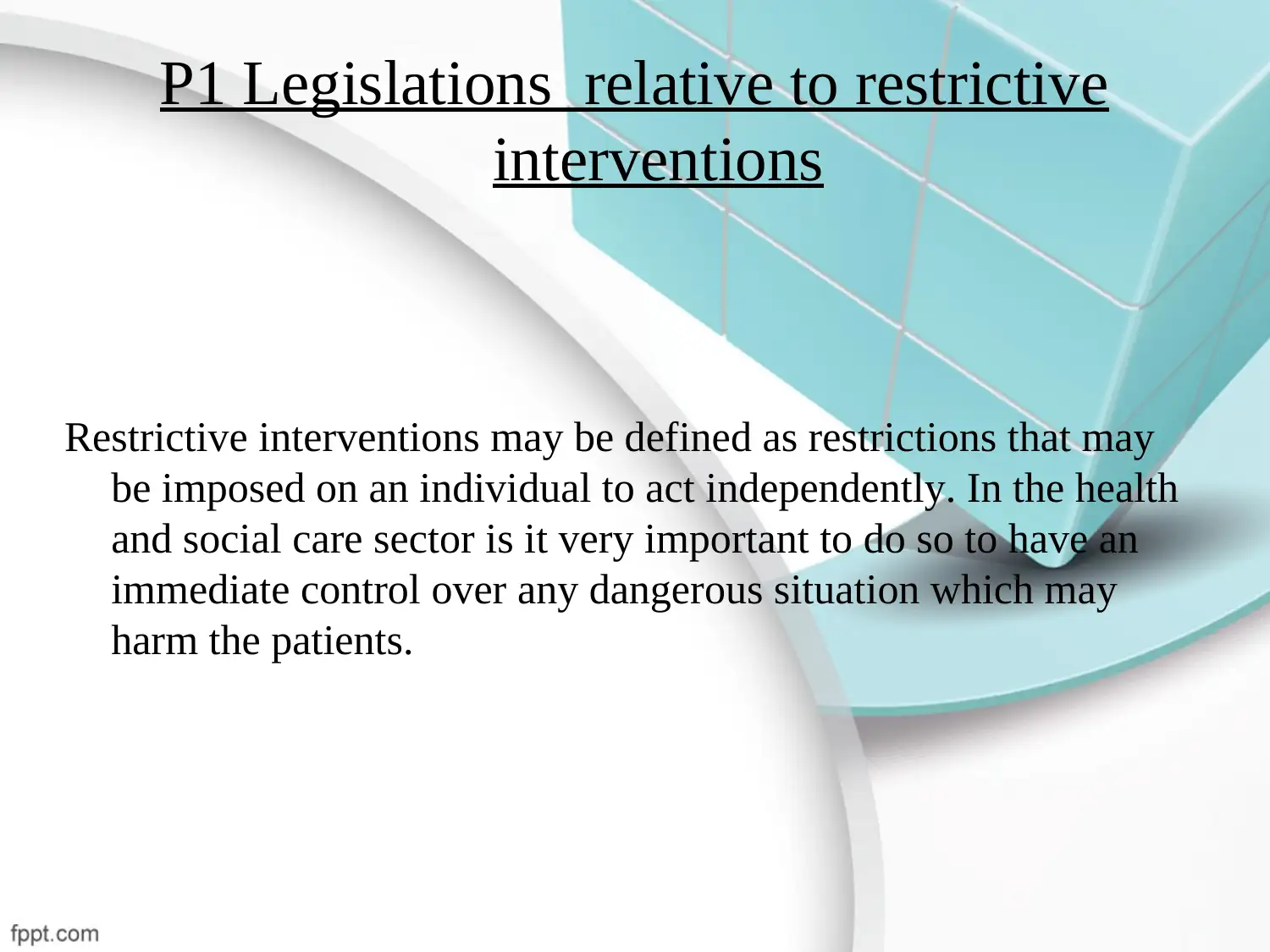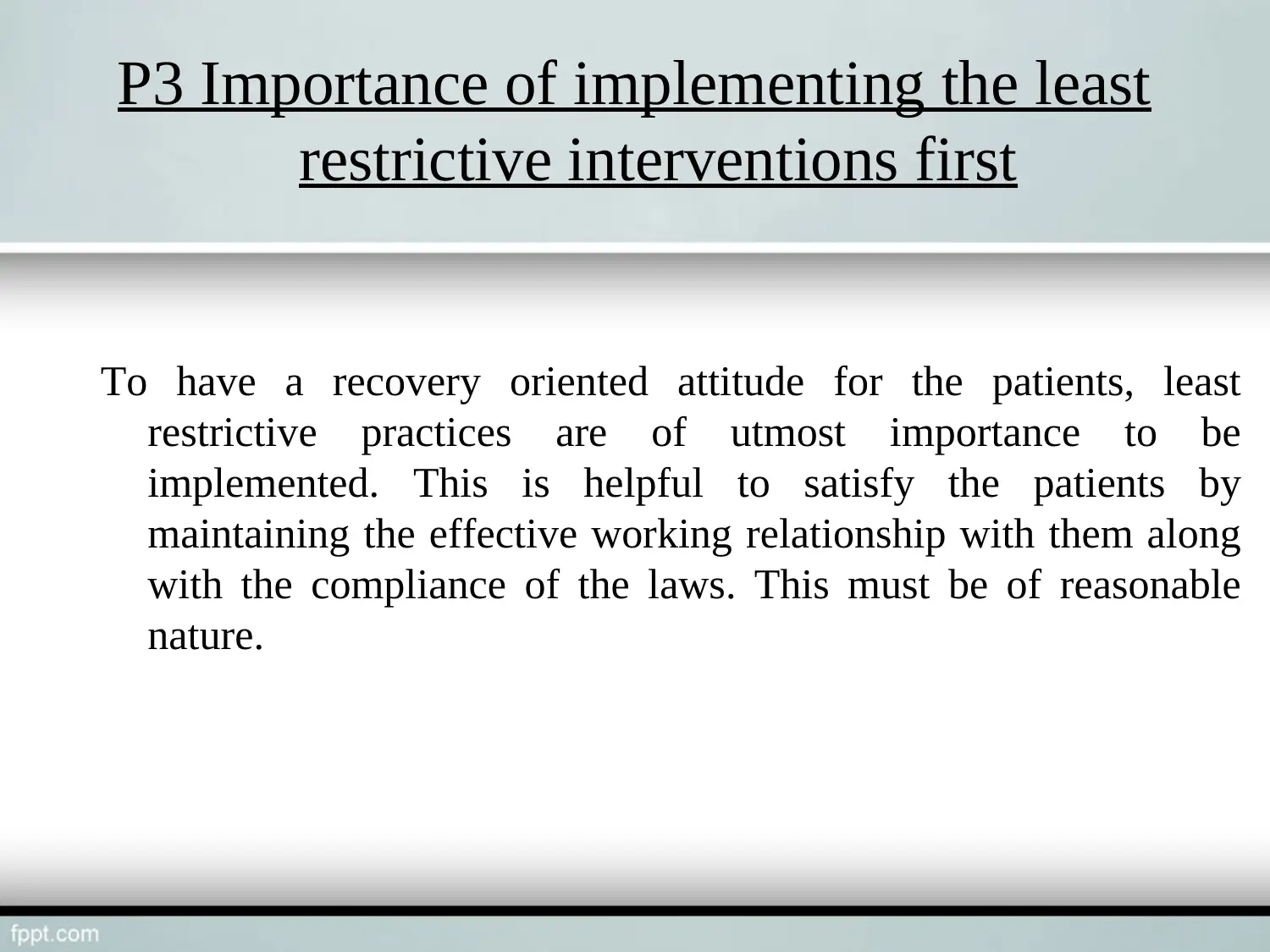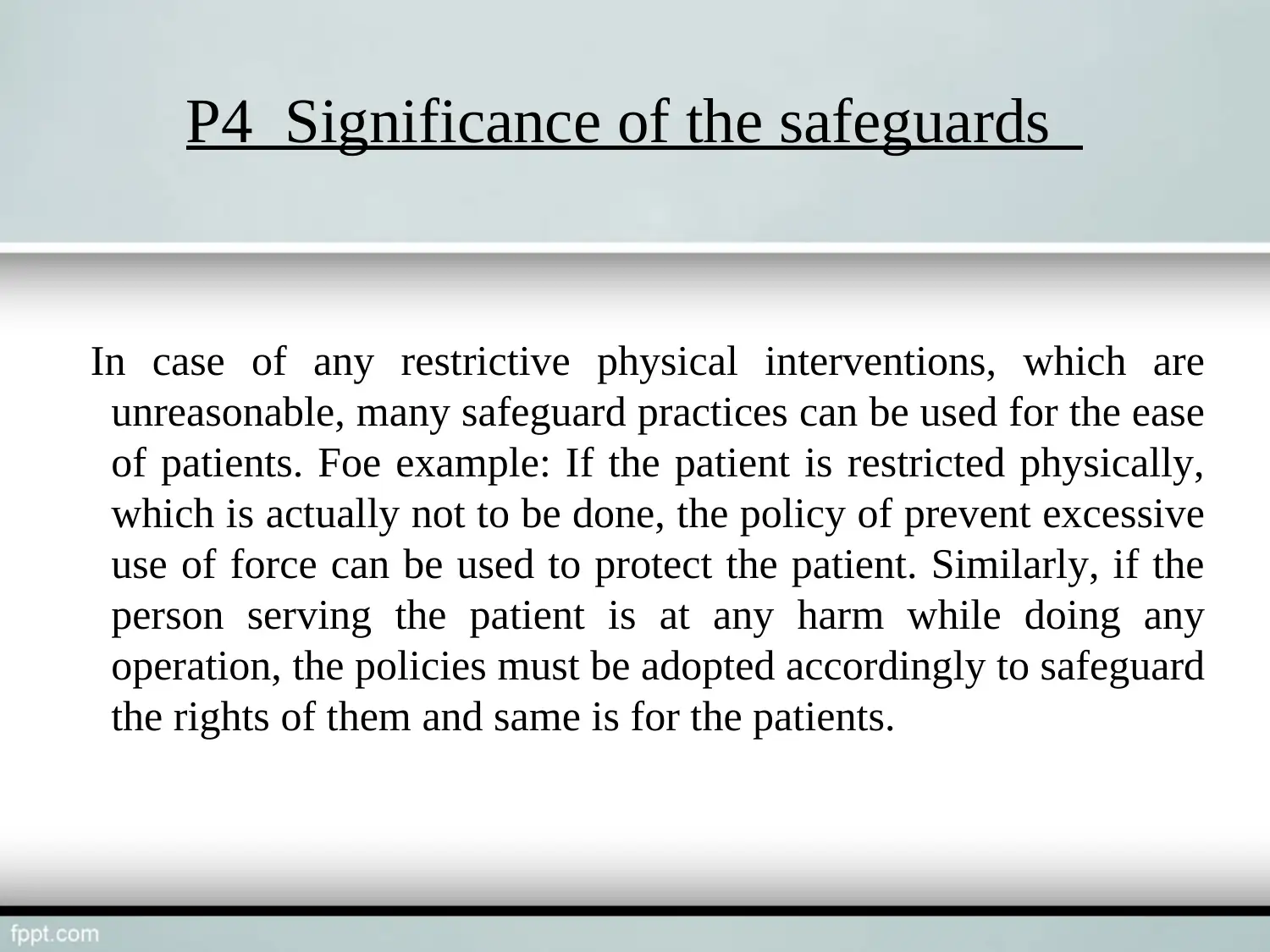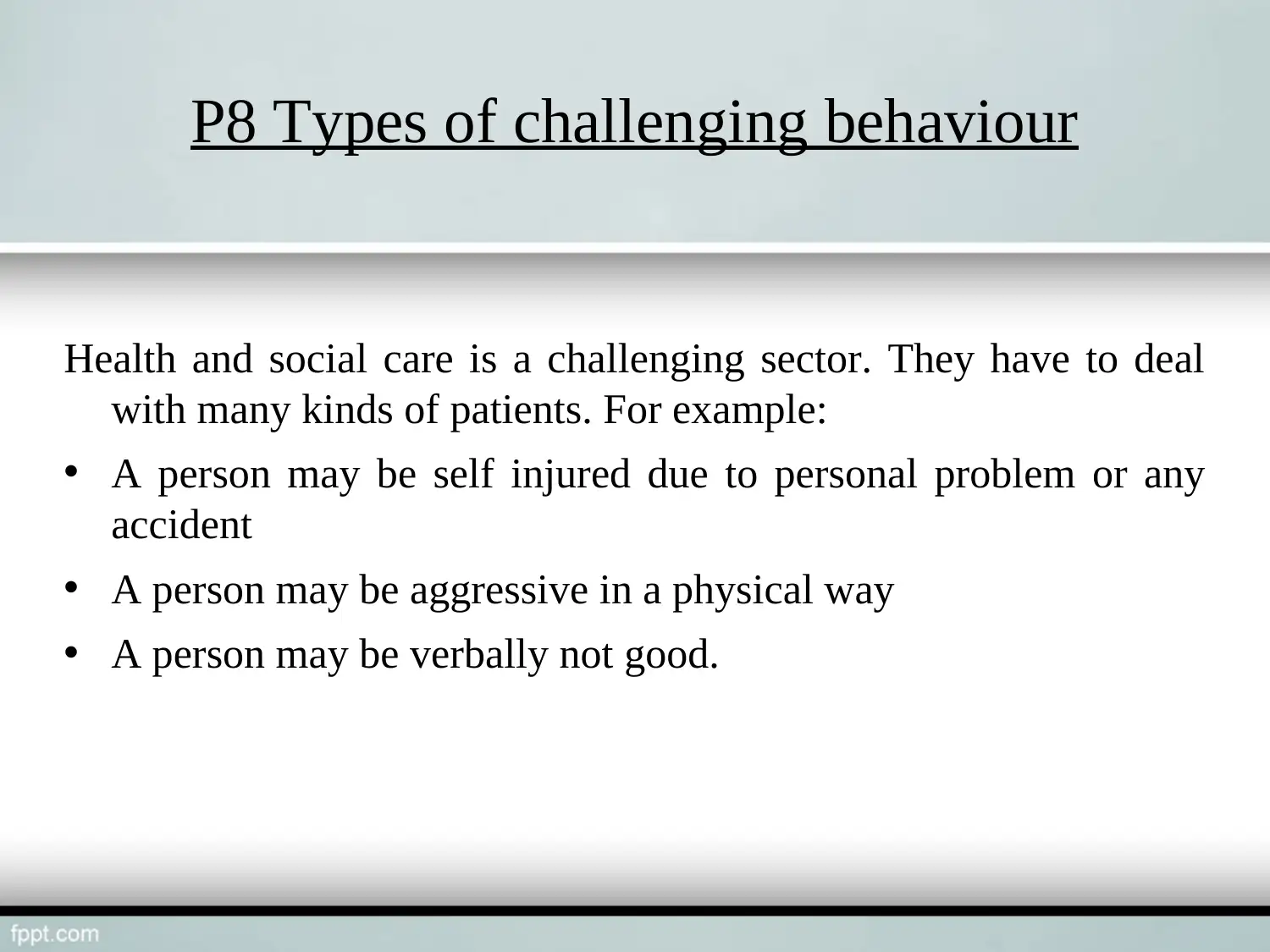Restrictive Interventions: Legislation, Safeguards, and Behaviors
VerifiedAdded on 2023/03/21
|5
|274
|76
Report
AI Summary
This report provides an overview of restrictive interventions, focusing on legislation and safeguards within the healthcare sector. It explores the importance of implementing the least restrictive interventions and highlights various safeguards to protect patients and healthcare providers. The report also addresses different types of challenging behaviors that healthcare professionals may encounter, such as self-injury, physical aggression, and verbal misconduct. By examining these aspects, the report aims to offer a comprehensive understanding of how to manage and mitigate risks associated with restrictive interventions while ensuring patient safety and upholding ethical practices. The report is available on Desklib, a platform offering valuable resources for students.
1 out of 5












![[object Object]](/_next/static/media/star-bottom.7253800d.svg)